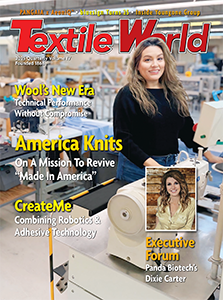MOORPARK, Calif. — May 30, 2018 — Pindler, an international wholesaler of decorative fabrics, has announced its latest collection — the Sunbrella Architexture Collection by Richard Frinier — which features nine patterns inspired by architectural design elements.
The sophisticated collection — which showcases Frinier’s appreciation for the role that architecture plays in society — draws inspiration from a growing architectural movement that involves the surfacing and resurfacing of buildings around the world. The industrial-inspired collection is brought to life through blueprints of photographs of buildings, which are then translated into a versatile range of textiles with distinctive colors, patterns, textures and constructions.
“We’re pleased to introduce this incredible new indoor and outdoor collection to the design trade,” said Sarah Williamson, design manager of Pindler. “Partnering with Richard Frinier on the Sunbrella Architexture Collection allowed us to combine two major design trends — architectural inspiration and performance fabrics — both in high demand within the marketplace.”
The nine patterns are detailed below:
1) Architex – Architex is a woven grid pattern that is reimagined from the window wall of a New York skyscraper.
2) Hexspace – Hexspace is based on an architectural window screen Frinier saw on a French metropolitan high-rise building.
3) Hi Rise – Hi Rise appears as a textured stripe of tiny windows that draws inspiration from the city of Kowloon, a densely populated area of Hong Kong.
4) LAX – LAX is a geometric design inspired by a modern building façade from the city of Los Angeles.
5) Linx – The Linx pattern is an adaptation of a hex-shaped façade, as seen on a Shenzhen skyscraper, translated into a dimensional motif.
6) Lumas – Lumas is an offset window pattern infused with reflective fiber for a shimmer that creates a sense of energy.
7) NYC – NYC is a large-scale abstract geometric design of architectural forms and skyscrapers that translates the vertical façades of the iconic metropolis into a tapestry of urban living.
8) Struxture – Struxture is the base textile for all of the Architexture Collection patterns and references the appearance of exterior surface forms and materials.
9) Surface – Surface is a honeycomb pattern originating from slate tiles that transforms into a three-dimensional fabric construction.
Richard Frinier is a prolific and internationally acclaimed designer focused on product design, creative visualization and direction. For more than three decades, he has successfully created authentic, relevant and memorable designs widely respected by the trade and specified by architects, interior designers and consumers for a variety of interior and exterior spaces.
The Sunbrella Architexture Collection by Richard Frinier is currently available at Pindler’s 16 corporate showrooms and seven agent showroom locations across the country as well as three agent showrooms in Canada.
Posted May 30, 2018
Source: Pindler




